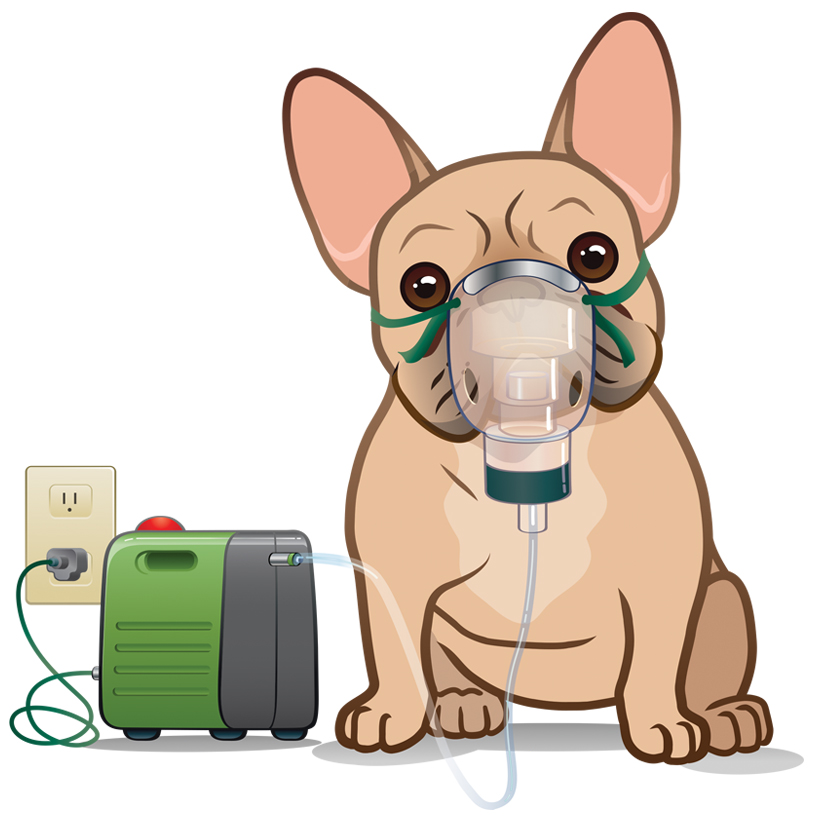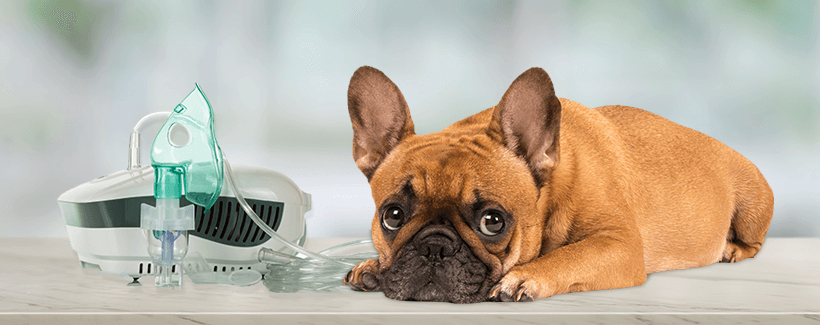Nebulizer Use for Dogs, Cats, and Other Pets
Albuterol Sulfate Inhalation Solution Rx, 0.5%, 20 ml
Bronchodilator that relaxes muscles in the airways and increases air flow to the lungs
Cats, dogs, and other pets sometimes develop respiratory illnesses (such as asthma, pneumonia, kennel cough, and bronchitis) that require inhaled medication. Your veterinarian may prescribe inhaled nebulizer therapy (which administers saline, albuterol, antibiotics, or other medications) for your pet’s relief.
How does a nebulizer function?
A nebulizer functions as a delivery system, changing medication from liquid into a fine particle mist, allowing direct delivery to the respiratory tract. It is typically the most effective way to provide symptom relief for respiratory ailments. Nebulization also helps break up congestion, which helps support your pet’s immune response.
Download this handy reference for nebulizer care »
How to prepare pet nebulizer treatment
- Insert opposite ends of the tubing into the compressor and medicine cup.
- Add the correct dose of medicine into the medicine cup.
- Flip the compressor switch to “on.”
- Administer aerosolized medication to your pet. The process lasts 5-10 minutes and will slow down as medicine runs out. Be sure and shake medicine cup to ensure all medication was used.
- Take apart the plastic parts of the nebulizer. Wash all parts between each treatment to reduce bacteria contamination.
- Dry the tubing by attaching it to the compressor and run the machine for a minute or two. Use a paper towel or clean towel to dry the other parts.

How do I effectively administer a pet nebulizer treatment?
Following are several different methods that may be used depending on the personality and type of pet being treated. Visit with your veterinarian on recommended methods for your pet.
- An aerosol chamber may be created by placing the nebulizer inside a cage covered with a towel for larger pets, such as a dog or cat. For smaller pets, such as rats or guinea pigs, place the nebulizer and tube (with the towel covering) inside their terrarium.
- Place a soft pediatric mask over your pet’s face before turning the compressor on. Practice placing the mask on your pet prior to treatment. Use a little canned food, cream cheese, or peanut butter inside the mask, and allow your pet to lick it. This can offer a distraction during the treatment.
- Hold the nebulizer tube close to your pet’s nose or mouth, enabling your pet to inhale some of the medication.
Helpful hints for easing pet anxiety during pet nebulization treatment
Help your pet accept nebulization by scheduling treatment at the same time every day. Offer them a reassuring pat and speak in soothing voice. Reward good behavior with a treat afterwards. This helps to promote a positive experience and healthy compliance.
At the end of treatment, your pet’s gums and tongue should appear very pink. This shows efficacy and whether or not your pet is receiving adequate oxygen. If you do not notice this, seek help from your veterinarian. Always be sure to consult with your veterinarian about any questions or difficulties administering prescribed treatments.


